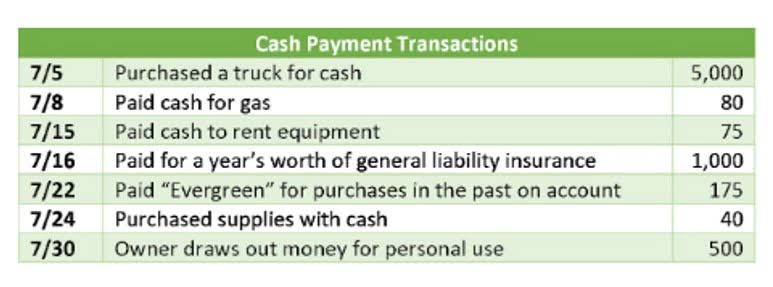
Changes in working capital will help you determine where Microsoft is in its working capital cycle. Companies will try to shorten their working capital cycle by collecting receivables sooner or extending accounts payable. Our Cash Management Solution automates the reconciliation process between bank statements and internal financial records, reducing manual effort and errors and increasing cash management productivity by 70%. With our treasury and risk solutions, treasury professionals gain instant, personalized insight into their cash positions with unparalleled global visibility. Buffett isn’t going into the specifics of whether to add or subtract the number. He is saying that you should think about how the cash flow requirements of the business affects the final owner earnings calculation.
What is Net Working Capital Ratio?
- In short, measuring the change in NWC by deducting the ending period balance from the beginning period balance tends to be more intuitive in terms of understanding the impact on cash (i.e. “inflow” or “outflow”).
- Thus, Net Working Capital aims to provide funds to finance your current assets by current liabilities.
- Therefore, the efficient allocation of capital toward net working capital (NWC) increases the free cash flow (FCF) generated by a company – all else being equal.
- An increase in a company’s working capital decreases a company’s cash flow.
- Accordingly, you should not invest in current assets excessively as it impacts your firm’s profitability.
- You might ask, “how does a company change its net working capital over time?
- Next, compare the firm’s working capital in the current period and subtract the working capital amount from the previous period.
However, short-term loans that accrue significant interest can decrease working capital. Generally speaking, a ratio of less than 1 can indicate future liquidity problems, while a ratio between 1.2 and 2 is considered ideal. If the ratio is too high (i.e. over 2), it could signal that the company is hoarding too much cash, when it could be investing it back into the business to fuel growth. It’s useful to know what the ratio is because, on paper, two companies with very different assets and liabilities could look identical if you net working capital relied on their working capital figures alone.
- A lower ratio means cash is tighter, so a slowdown in sales could cause a cash-flow issue.
- Technically, it might have more current assets than current liabilities, but it can’t pay its creditors off in inventory, so it doesn’t matter.
- Clearly, changes in working capital will have a direct impact on cash flows.
- Current liabilities include accounts payable, trade credit, short-terms loans, and business lines of credit.
- The interpretation of either working capital or net working capital is nearly identical, as a positive (and higher) value implies the company is financially stable, all else being equal.
Subtract Current Liabilities

Remember that debt is a choice each business will make for financial reasons. The big point of the working capital section is increasing any of these requires cash, a very important point that we will return to many times. Some of the information we will cover can be confusing, but it is important to understand. Businesses can forecast cash into any category or entity on a daily, weekly, and monthly basis with up to 95% accuracy, perform what-if scenarios, and compare actuals vs. forecasted cash. Scrutinize the workflow to identify processes suitable for automation, thereby enhancing overall efficiency and contributing to improved working capital management. By following these steps, you can accurately calculate your net working capital and what are retained earnings then determine any changes over time.
Exploring Net Working Capital: Real-Life Examples and Implications
The working capital formula gives you an understanding of your cash-flow situation, ensuring you have enough money available to maintain the smooth running of your business. It’s also important for fueling growth and making your business more resilient. The working capital ratio shows the ratio of assets to liabilities, i.e. how many times a company can pay off its current liabilities with its current assets.
- For example, consider the following hypothetical excerpt from a company’s balance sheet.
- A healthy net working capital position suggests that a company is well-prepared to navigate economic challenges and withstand financial shocks.
- Yes, working capital can be zero if a company’s current assets match its current liabilities.
- Positive working capital is when a company has more current assets than current liabilities, meaning that the company can fully cover its short-term liabilities as they come due in the next 12 months.

But if current assets don’t exceed current liabilities, the company has negative working capital, and may face difficulties in growth, paying back creditors, or even avoiding bankruptcy. It’s a commonly used measurement to gauge the short-term financial health and efficiency of an organization. Working capital, often referred to as the lifeblood of a business, represents the funds available for day-to-day operations. It encompasses current assets such as cash, inventory, and accounts receivable, minus current liabilities like accounts payable and short-term debt. Changes in working capital reflect the fluctuations in a company’s short-term assets and liabilities over a specific period. Net working capital (also called working capital or NWC) is an essential financial metric used to help small business owners determine the liquid cash they have on hand to cover short-term financial obligations.

📆 Date: June 28-29, 2025🕛 Time: 8:30-11:30 AM EST📍 Venue: OnlineInstructor: Dheeraj Vaidya, CFA, FRM

This indicates the company lacks the short-term resources to pay its debts and must find ways to meet its short-term obligations. However, a short period of negative working capital may not be an issue depending on the company’s stage in its business life cycle and its ability to generate cash quickly. Cash Flow Management for Small Businesses Working capital encompasses the difference between current assets and current liabilities.
